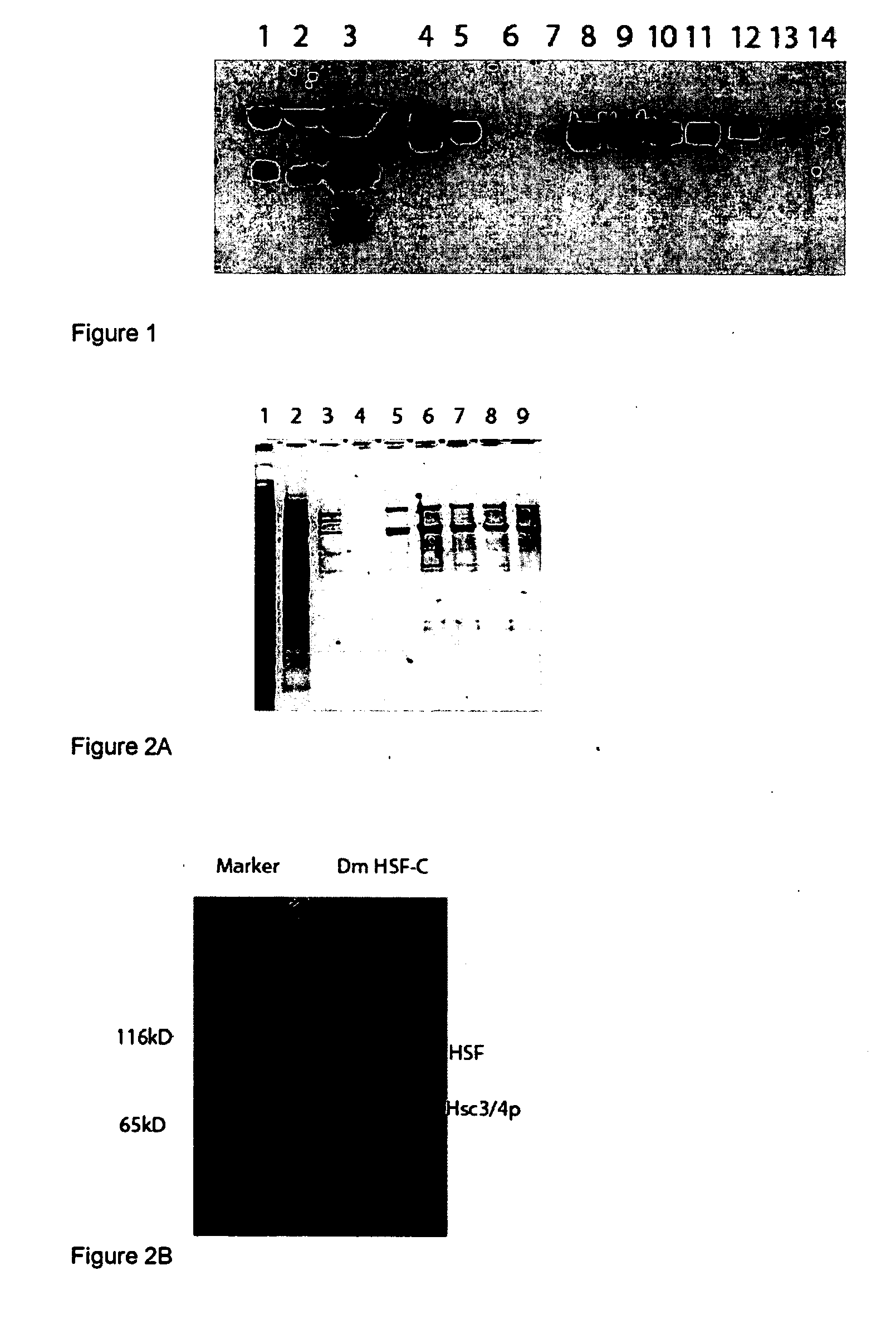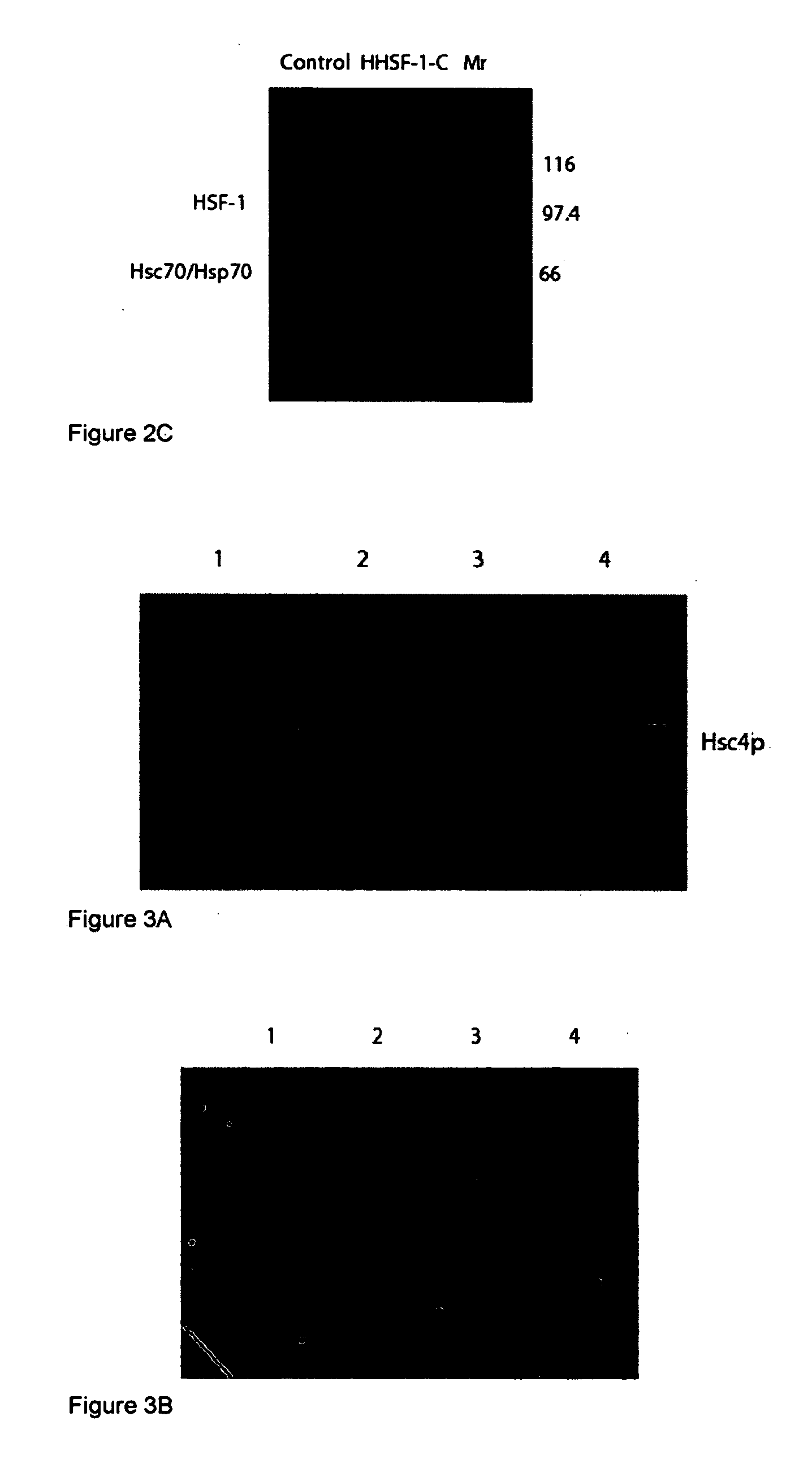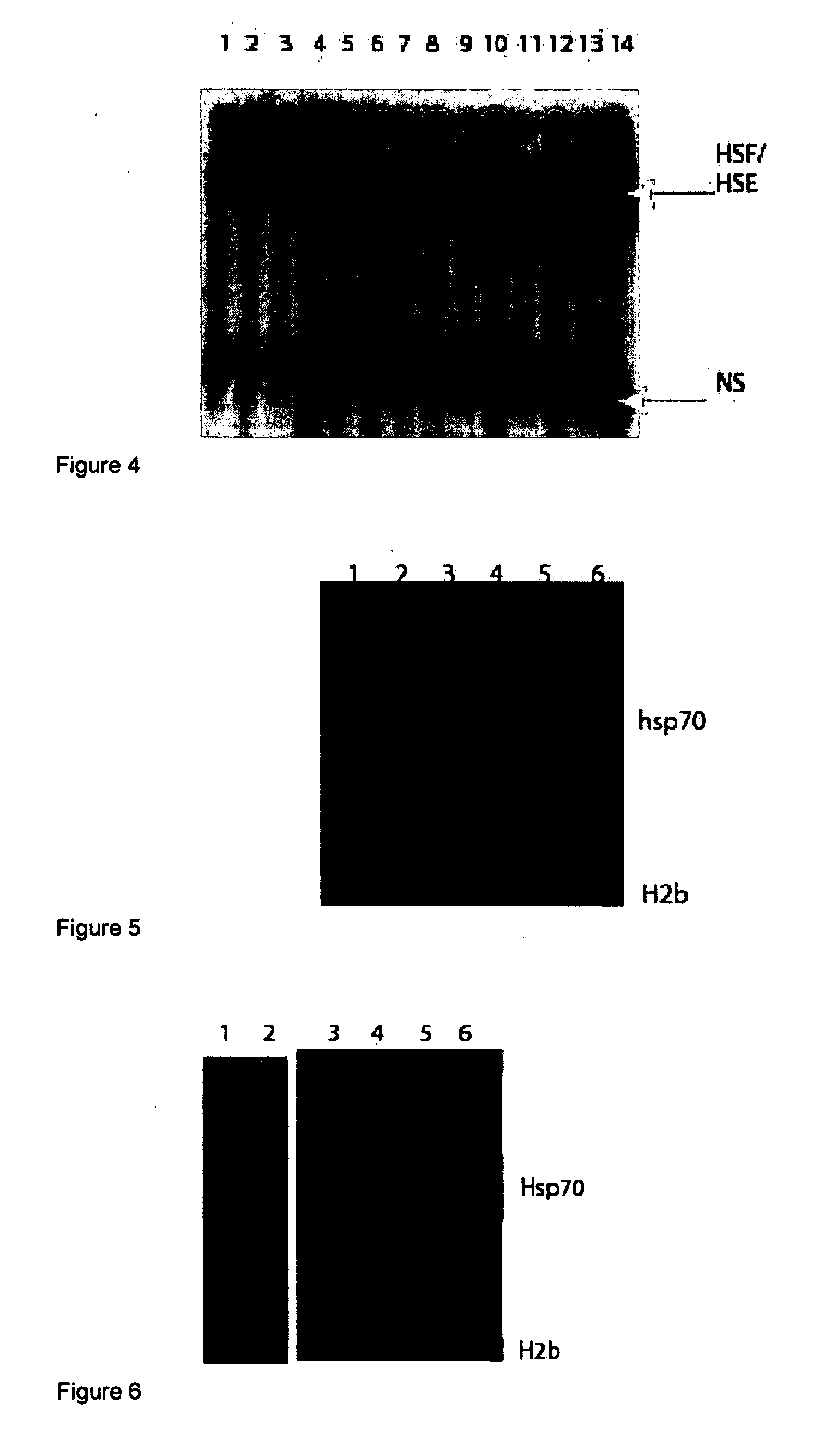Compositions and methods for regulating cellular protection
a technology of cellular protection and composition, applied in the field of neurodegenerative diseases prevention and treatment, to achieve the effects of increasing the synthesis of hsp70, increasing the binding of heat shock transcription factor (hsf), and increasing the transcription of hsp70
- Summary
- Abstract
- Description
- Claims
- Application Information
AI Technical Summary
Benefits of technology
Problems solved by technology
Method used
Image
Examples
example 1
Elucidating the Roles and Interactions of Heat Shock Molecules Regulating Hsp70 Transcription and Expression
[0093]This example demonstrates the roles of molecules involved in regulating HSF binding to DNA through knock down and knock in studies. First, the proteins that make up the HSF complex were identified: HSF, Hsc4p and Hsc3p. The roles of these molecules were then examined using RNAi knock downs. The results of these studies show that, in non-shocked cells, Hsc4p represses DNA binding by HSF. Hsc3p appears to facilitate HSF DNA binding in stressed cells and to function as a co-activator for DNA binding in heat shocked cells. Knocking down Hsc4p allows HSF binding to promoters of the Hsp70 gene and activate transcription without heat shock.
[0094]I have established Drosophila cell lines (Schneider line 2) expressing HSF with a carboxyl terminal fusion of the IgG binding unit of protein A and the calmodulin-binding peptide (CBP) separated by a TEV-protease cleavage site (Forler e...
example 2
Mechanism of Regulation of HSF DNA Binding
[0126]This example demonstrates that temperature sensing by HSF is a function of the association of the HSF with two Hsc proteins: Hsc3p, which functions as a co-activator, and Hsc4p, which functions as a repressor in non-shocked cells.
[0127]The domains of HSF that interact with Hsc3p and Hsc4p have been determined and found to be primarily located to the oligomerization domain of HSF. Shown in FIG. 13 is a protein-protein interaction analysis. HSF was synthesized using a wheat germ coupled transcription / translation synthesis system with S35 methionine. The templates used were generated with PCR and primers that allowed specific truncation of the carboxyl terminus of the HSF resulting in progressively smaller labeled HSF molecules, shown as input. Bacculovirus expressed Hsc3p and Hsc4p were combined with the labeled HSF molecules and incubated overnight at 4° C. Talon chelating beads were added and the reactions continued for 90 minutes on a...
example 3
Activation of HSF to Produce Neuroprotective Levels of Hsp70
[0133]This example demonstrates the ability to activate the HSF without cellular stress via small molecules. The goal here is to activate HSF to produce adequate levels of Hsp70 that can provide neuroprotective functions to the human brain. To begin these studies, two common non-steroidal anti-inflammatory drugs (NSAIDs), ibuprofen and salicylic acid, were tested. These molecules have been previously shown to stimulate HSF DNA binding in mammalian and Drosophila cells. The findings presented here differ from those previously published. As reported here, both salicylic acid and ibuprofen can stimulate HSF DNA binding, Hsp70 transcription and Hsp70 protein synthesis. FIG. 13 shows the concentration of salicylic acid and ibuprofen that are optimal for induction of DNA binding and Hsp70 protein synthesis in Drosophila cultured cells. It is clear that both DNA binding and Hsp70 protein synthesis have identical optimums.
[0134]Ibu...
PUM
| Property | Measurement | Unit |
|---|---|---|
| Temperature | aaaaa | aaaaa |
| Temperature | aaaaa | aaaaa |
| Molar density | aaaaa | aaaaa |
Abstract
Description
Claims
Application Information
 Login to View More
Login to View More - R&D
- Intellectual Property
- Life Sciences
- Materials
- Tech Scout
- Unparalleled Data Quality
- Higher Quality Content
- 60% Fewer Hallucinations
Browse by: Latest US Patents, China's latest patents, Technical Efficacy Thesaurus, Application Domain, Technology Topic, Popular Technical Reports.
© 2025 PatSnap. All rights reserved.Legal|Privacy policy|Modern Slavery Act Transparency Statement|Sitemap|About US| Contact US: help@patsnap.com



